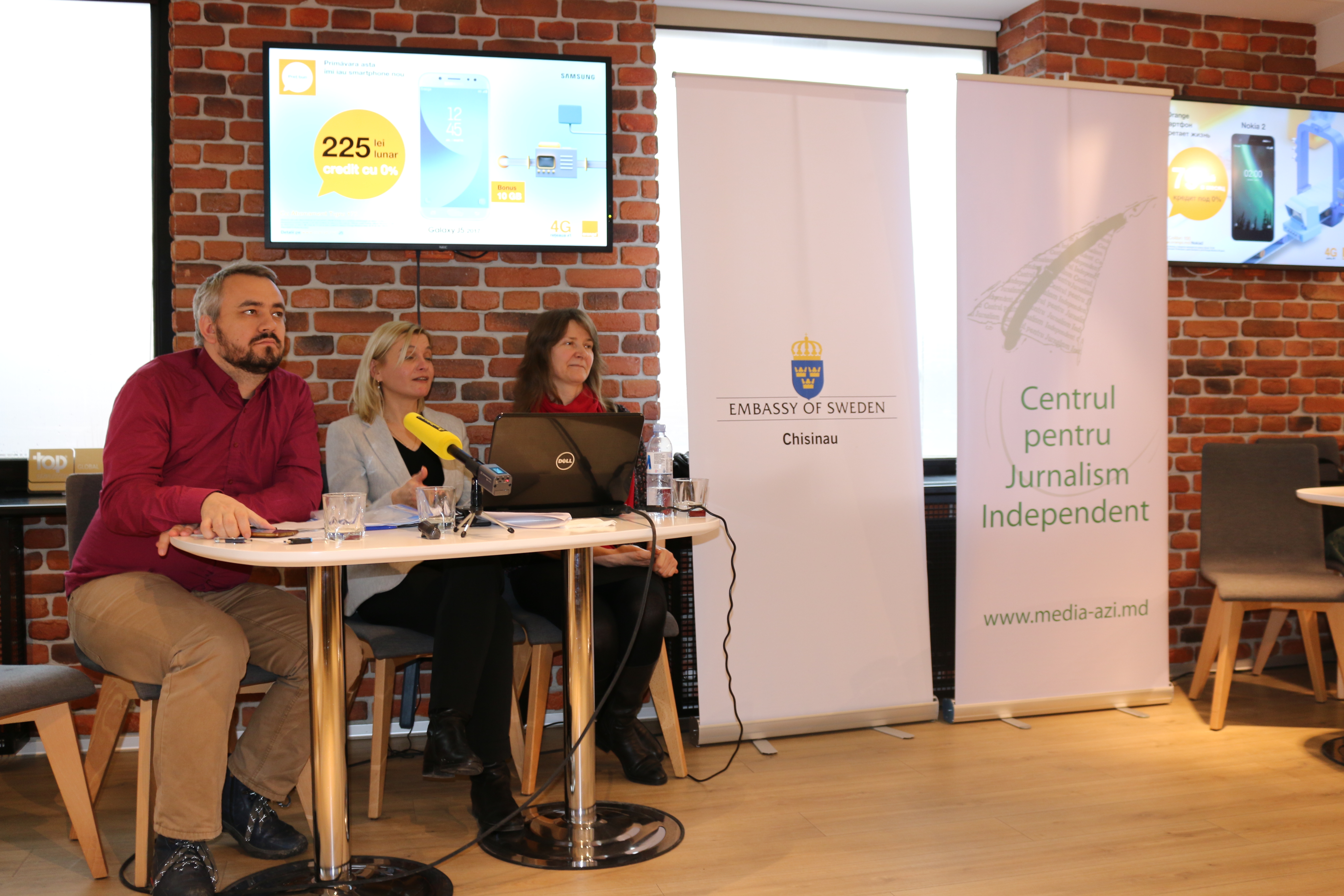
Thus, the monitoring showed that the highest share of women portrayed in the news – 39.5%, was found at diez.md portal, followed by PRIME and Canal 2 TV channels – 38.8% of women being either sources or protagonists. The visibility of women in newscasts on Moldova 1 public TV channel is 35%, on NTV Moldova – 33.3%, on PRO TV – 30.5%, on Jurnal TV – 25%. Next in the line are the portals agora.md – 25.3%, deschide.md – 22.11% and unimedia.info – 24.7%.
The presence of women and men is uneven and it depends on the topic of the piece of news. In politics-related matters men predominate, while women are more often quoted as sources and protagonists in the field of education. A certain balance was noticed in the social field.
An analysis of coverages through the lens of compliance with the law in force and with the Journalist Code of Ethics, focused on gender equality, revealed that women are almost never approached as experts in such areas as economics, administration, finances, foreign policy, electoral reform, etc. Respectively, women do not appear in social-political talk shows.
According to the monitoring report, some media outlets published pieces of news with the particular intention of combating gender stereotypes, promoting thus positive models of women’s and men’s involvement in social life. However, broadcasting coverages promoting positive models is not a general trend, but rather a rare occurrence.
Not many instances promoting gender stereotypes were found. In some of these cases this was done unknowingly while the purpose of the coverages was, in fact, to brake the stereotypes.
The 10 media outlets were monitored between 6 November and 3 December 2017. The full report will be available on the IJC portal, media-azi.md.
The Report on the Monitoring of the Media Content from the Point of View of Gender Balance was developed as part of the ‘Media for gender balance’ Campaign, implemented by the Independent Journalism Center with the financial support of the Swedish International Development Cooperation Agency, through the Swedish Embassy in Chisinau.










